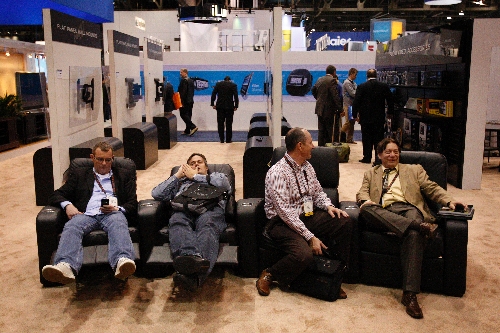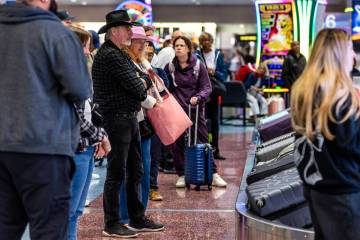Study finds conventions help economy, support jobs
Although the stigma of corporate gatherings as thinly disguised parties has largely faded, the industry wants to be prepared for next time.
A group of seven trade associations on Thursday unveiled a jointly funded study that found conventions and meetings generated $263 billion in national spending and supported 1.7 million jobs nationwide a year, numbers they will try to impress on members of Congress and eventually a wider audience. The goal is to avoid a repeat of two years ago, when some politicians, including President Barack Obama, chided companies for holding events at swank resorts or coming to Las Vegas "on the taxpayers' dime."
"It has gotten to be much less of a problem but there is still an overhang," said Roger Dow, CEO of the U.S. Travel Association, one of the study's sponsors. "The overhang is that some people still worry about who will take potshots at them if they hold an event."
As the industry became a political piñata two years ago and the image damage multiplied, industry leaders found they had only anecdotal or local information with which to fight back. As a result, they acknowledged that various counterattacks had little effect.
That led the groups to hire PricewaterhouseCoopers to catalog the industry's annual economic impact.
The findings included:
■ The $263 billion in direct spending includes $150 billion related to meetings themselves and the rest to items such as rooms and food bills.
■ About 205 million people attended 1.8 million meetings, of which 1.3 million were tied to corporate purposes.
■ More than one-third of attendees travel less than 50 miles and return home the same day, while 117 million book a hotel for at least one night.
■ The industry pays $25.6 billion in taxes to all levels of government.
"We need this kind of data to show the legislators on Capitol Hill," American Hotel & Lodging Association CEO Joseph McInerney said. "They need to know that when they talk badly about the industry, sometimes people listen."
The Las Vegas Convention and Visitors Authority counted 18,000 meetings last year that drew 4.5 million people, 12 percent of the total visitor count. But the authority estimated that the average meeting attendee spent $942 per visit, compared with $590 for tourists.
But what industry officials term the "AIG effect," named for American International Group, the huge insurance company that continued to entertain lavishly after taking a federal government bailout, has largely passed.
"It did have its ramifications, for sure," said Alan Waxler, who owns AWG Inc., a meeting planning company. "It's not a dead issue, but because of continued recovery, it's not much of a factor anymore."
A broad range of local and national forecasts point to rising conference attendance and spending at least through this year.
However, Waxler believes Las Vegas is now on a par with most other cities when it comes to image.
"We had a little harder job because we were singled out," he said, alluding to remarks President Obama made on two occasions. "But I think that is pretty much in the past because our value is significantly better than many other cities."
But McInerney still sees Las Vegas being singled out when it comes time to pick a meeting location.
"People sometimes think they can go to Des Moines (Iowa) but not Las Vegas," he said. "People see Las Vegas as being sexy, glamorous -- so when you go there you are just going to play."
Contact reporter Tim O'Reiley at toreiley@reviewjournal.com or 702-387-5290.

















